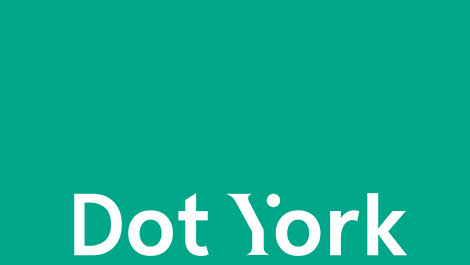
Dot York returned last Thursday 9th November with a new lease of life, new venue, and new sponsor. (Us!) The day’s events saw 16 compelling presentations, lunch by Smokin Blues and evening event at Brew York.
If there was an overriding theme to the talks, it was probably empathy. We all make better, more successful digital products if we make the effort to learn about our users. Or seen from another perspective, recognising the diversity of our users, our stakeholders and colleagues. Measurement was another theme, one way in which we learn from our users and the impact we’re having. Here’s my summary of the day’s talks:
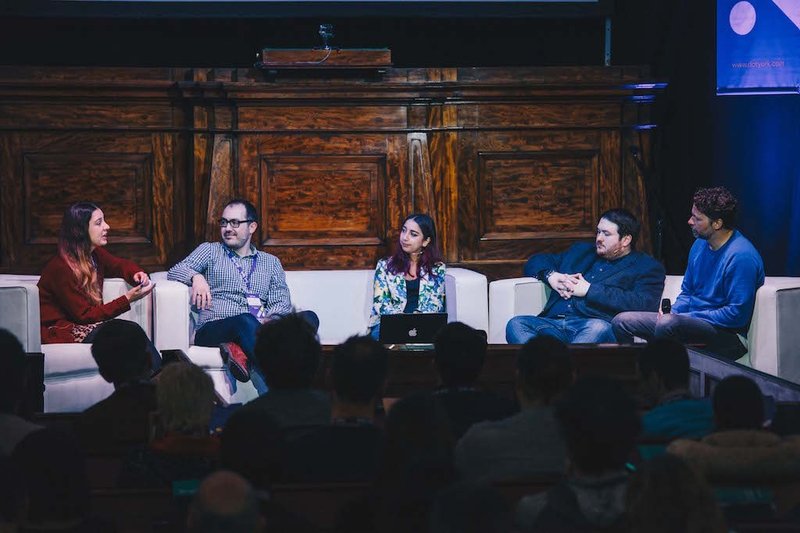
Llara, Zarino, Laura and Adam in a panel discussion with compère, Scott
Llara Geddes started things off on a note that always resonates with me – with a story about a project that ended in failure. Her UX team delivered a project that perfectly met the client’s design brief – until user testing at the very end showed that nobody could use it, or even see the point of it. Too often UX design is misunderstood as simply the delivery of design artefacts, and too often designers compliantly go along with it. Instead, we should start with user research, understand who our users are and where our product fits in. From this we can form testable hypotheses. This is “insight-driven design.”

Llara Geddes speaks of a UX project that went wrong
I was very excited to have a talk from mySociety, as I’ve admired their work in “civic technology” for over 10 years. Zarino Zappia’s talk about design for the developing world didn’t disappoint:
- Despite the blanket title, there is no one-size-fits-all approach to designing for the developing world. Countries lumped under that label have far more differences than similarities. Every country has unique eccentricities.
- “Follow the users” – our snobbery doesn’t change the fact that in many countries, Facebook effectively is the internet. If you want to make a tool people actually use, you’ll have to work with it.
- We tend to forget how fast and homogenous the internet is in the developed world. Zarino stressed how important it is to design for multiple (often outdated) devices, and slow speeds. Browserstack is invaluable to enable testing throughout the project, much easier than virtual machines.
- Finally, set time aside for performance auditing, with the aim to make quick improvements.
Jessica White made a fun Rick & Morty-inflected case for dashboards – a clear and easy way to see all critical information on a single page. She divided them into 4 types:
- Business intelligence – strategic
- Management information – tactical
- Operational information – execution
- Development information – execution
You can find out more about each on her blog post Who Needs Dashboards? Just remember, don’t overload people with useless information. She ended with Randy Steinberg‘s timeless advice:
If you don’t measure it, you can’t manage it.
If you don’t measure it, you can’t improve it.
If you don’t measure it, you probably don’t care.
If you can’t influence it, then don’t measure it.
Adam Warburton from the Co-op gave the audience a refresher on Maslow’s pyramid – the hierarchy of human needs:
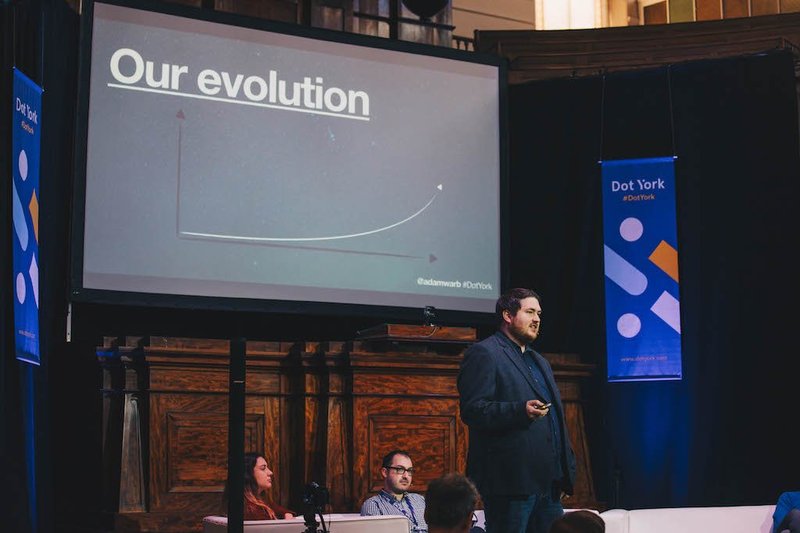
Viewed through this perspective, we can often reframe the brief for products or services, by recognising the underlying human need they’re addressing. In this way, even Instagram can be seen as a competitor to an electric drill! (If you wanted to have beautiful pictures in your life, by hanging some on the wall.) More realistically, video conferencing can be seen as a competitor to business travel, and so on.
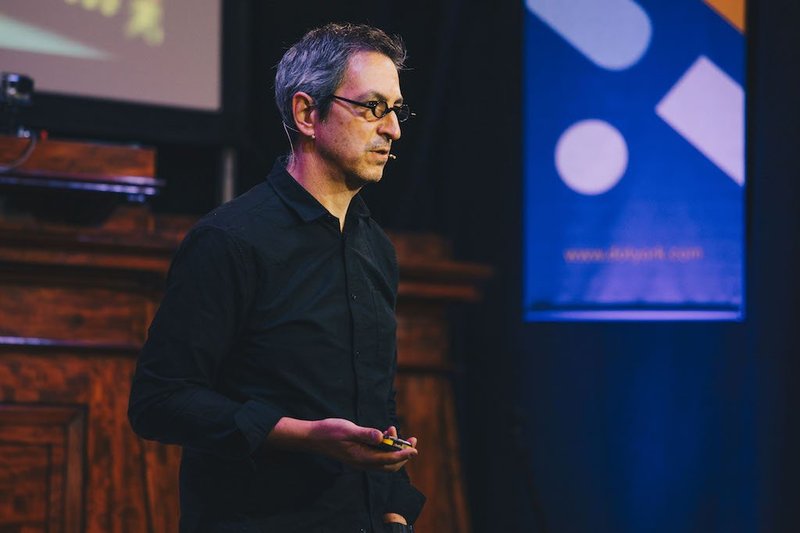
Ian Worley discusses his design experience inside a global financial institution
An unexpected highlight for me was Ian Worley’s “lessons from the front line” – recounting his experiences as a design leader inside a financial institution (Morgan Stanley) where design is, if it is recognised at all, merely seen as “make it suck less”. It’s easy to become jaded and complacent inside such an environment, but Ian made a convincing case for playing the long game and aiming high. Delivering quality is self-reinforcing – if you do it for one department, others will notice and want it too.
You may need to form stakeholder personas in order to communicate with them effectively. You probably can’t get them to care about “design” – instead, talk in terms they can appreciate, like cost reduction, risk reduction, efficiencies, etc. But remember your outsider status can be an advantage, so don’t be afraid to intrude.
Caolan McMahon brought us right back to nuts and bolts with a talk that couldn’t be more different – weighing up the pros and cons of single-page web apps. There were probably no techies in the audience that haven’t had to grapple with the rapid evolution of this approach to building web applications. Caolan reminded us not to ditch the built-in advantages of traditional web pages without reason, and gave some pointers for when the single-page approach is probably the right approach.
In the Q&A I weighed in with the implications of single-page apps on UX design – seeing designs as collections of interactive components rather pages, for example, each with many states that may require multiple states to be wireframed, or an interactive prototype.
Paul Connell talked about the work of the Open Data Institute (set up originally by Tim Berners-Lee), specifically ODI Leeds. They equip people and organisations to innovate with open data, and I encourage everyone to have a look at their past work and events on their website. In a happy correlation with Jessica’s talk, they even have a good example of a dashboard with key performance metrics.
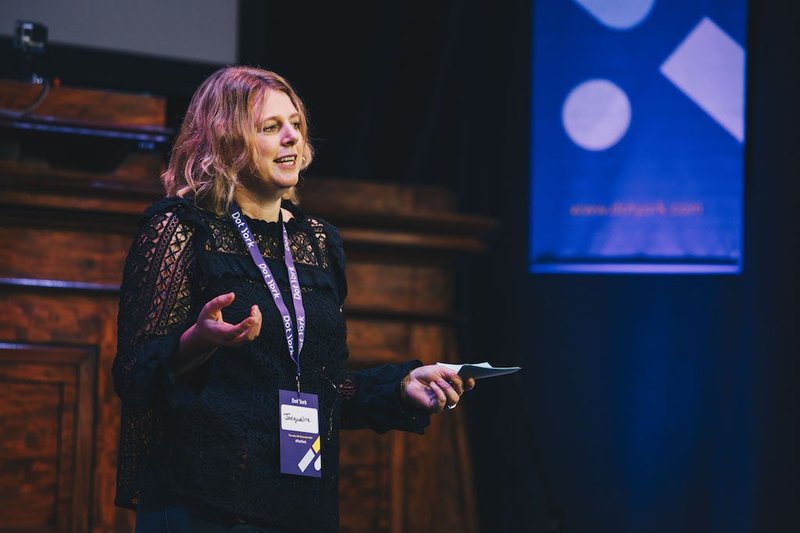
Jacqueline Whitehart on different publishing options
In the last talk before lunch, Jacqueline Whitehart showed how the world of publishing has changed, and how you can now earn more through self-publishing than by having a book put out by a major publisher. (She’s done both.) Readers certainly won’t be able to tell the difference. The ingredients for success should be familiar to most people in social marketing – be human and accessible, and ceaselessly engage with your fan base through social media. One tip for would-be self-publishing authors: if you spend money on one thing, get a proper cover design.
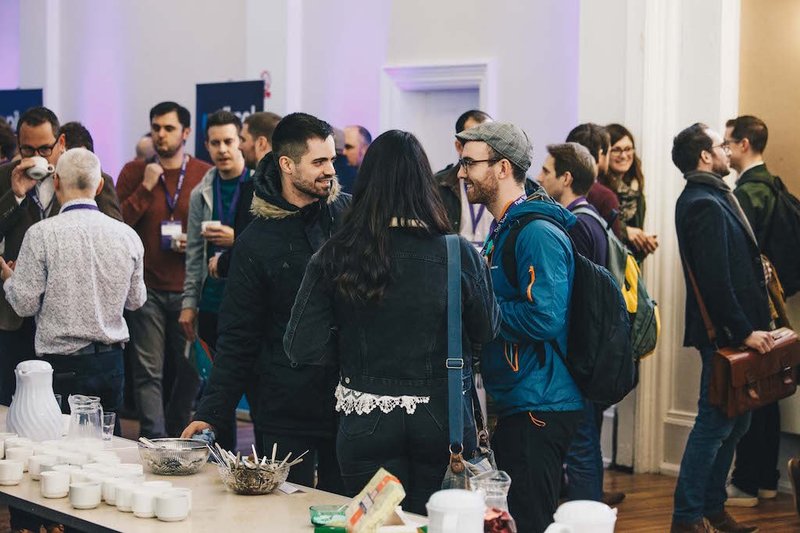
The breaks were great for networking
The next talks focused more on building teams. Tamara Littleton of The Social Element shared tips on how to work with a geographically distributed team – an increasingly prevalent reality for more and more firms. This involved a lot of technology (Hangouts, Slack, Trello, Basecamp, etc.), but also celebrating the diversity of people’s work setups, rather than hiding it. There are advantages and disadvantages to remote work, and ultimately you still need to try get people together in meatspace regularly, such as meetups and training days. And sadly, even though there are collaborative design apps (e.g. Mindmeister), nothing beats old-fashioned post-it notes.
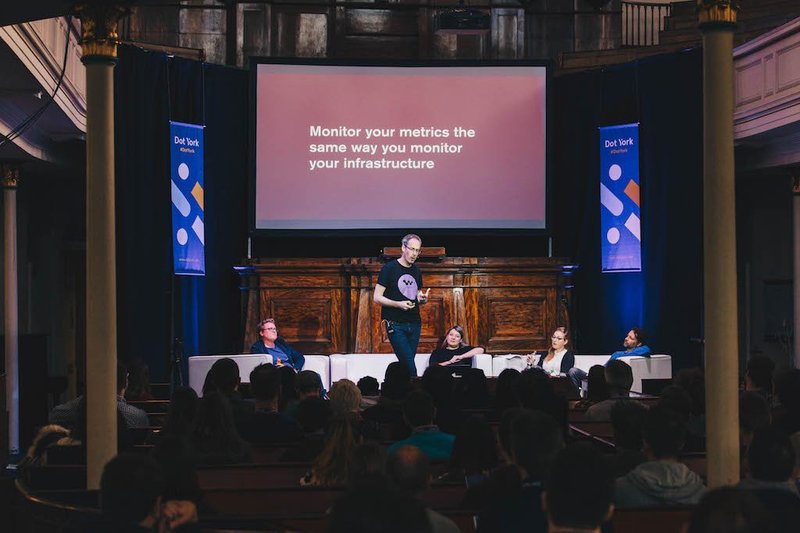
David Thompson refreshes Agile
David Thompson looked at the Agile methodology, and asked how we measure impact. The focus in Agile has tended to be on performance, less so on outcomes. His talk also dovetailed with Jessica’s – you need to measure as much as you can, and monitor your metrics the same way you do your infrastructure. Set up alerts for significant changes. Use it as a continuous source of learning.
I loved Natasha Sayce-Zelem’s talk about the “pipeline of new talent”. Having hired over 80 people in a year for Sky in Leeds, she clearly has the credentials to talk about this topic. Her key tips were:
- Refer-a-friend scheme
- Bootcamps: if there’s a shortage of dev in tech X, we’ll train you up or pair you with an existing dev
- Sponsor meetups and conferences, or host your own (and for those looking to be hired: go to them!)
- Form guilds inside your organisation, creating communities of interest and expertise in topics ranging from JavaScript to public speaking
- Recruit from overseas – start with those countries that have direct flights to your local airport
- Women in tech – initiatives that draw more women into technology positions
- And finally, have a BHAG: a Big Hairy Audacious Goal, e.g. to be the best engineering centre in the North. Consider this when writing job specs. This is what makes people join, and stay.
Hannah Nicklin (whose last name keeps getting autocorrected to “neckline”) gave a quietly rousing talk about what we can learn from a collective of French indie game developers, Klondike:
- Define what “collective” could mean – it could be simply shared space and resources, or more like an artistic label.
- Location matters – think about what makes your location unique, and how it can affect or inflect the things you make.
- Size matters – beyond a certain scale, the collective structure may not work anymore. But within a small group it can elevate talent that may otherwise be marginalised.
- And finally, no biggie, destroy capitalism. The Klondike collective may be seen as reliant on the French welfare state. In this way socialism can be seen as a vital part of cultural experimentation. What can we learn from this at a global scale?
Kicking off the last panel, Sarah Semark delivered the talk that probably did most to tie all the talks together. In radical empathy, she challenged us to recognise that our work has unavoidable social impact. By designing with empathy we can help humanise technology, make more successful products, and hopefully address the many ways in which technology is exacerbating human unhappiness and conflict. You may not feel you are naturally empathetic, but it can be learned. Sarah gave some tips, for example to travel widely. She encouraged us to remain curious – actively listening to other people. Work in more diverse teams. And aim to learn more every day.

Rachel Liu describes her life lessons and how to keep on learning
Rachel Liu gave a candid talk of her experience as a British-born Chinese person during a year working in Shanghai. Profound culture shock gradually gave way to a deeper understanding of what made British and Chinese culture different, and what may be the very real reasons for it. She learned to celebrate the struggle as a learning process, which is a healthy approach to one’s entire life – to be a lifelong learner, like a curious, fearless, child.
Tejay White gently trolled those in the audience who, like me, are absolutely terrible at mornings, by relating the steps she had taken to improve her own routine. Me, I had gotten up at 5.15am to catch my train to York, having gone to bed at midnight, after an hour of making myself angry with Twitter, as usual. Who knows how much happier and productive I might be if, like Tejay, my screen time ended at 9pm and my morning started with some meditation, yoga and dance cardio? I’d love to know, but the chances of my finding out remain pretty remote. Unfortunately.
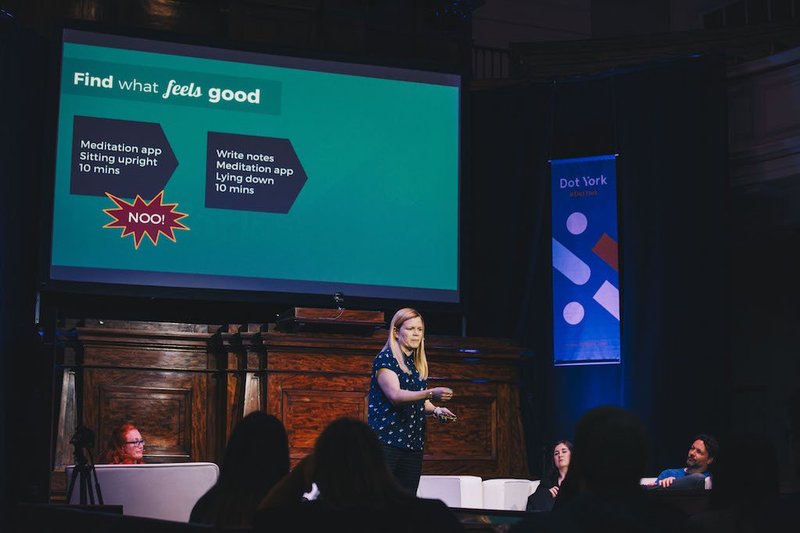
Tejay White inspires us all to make the most of our mornings
In the final talk of the day, Natalie Kane addressed a development in technology that should scare all of us: the haunted database. Haunted not by ghosts, but by something just as unknowable and potentially malign – the hidden biases and unintended consequences we are building into our algorithms. For example, machine learning algorithms trained on biased data end up creating something like modern-day phrenology, stereotyping innocent humans in ways that can have serious real-world consequences. This is an important topic that I’d like to see revisited in DotYork 2018.
